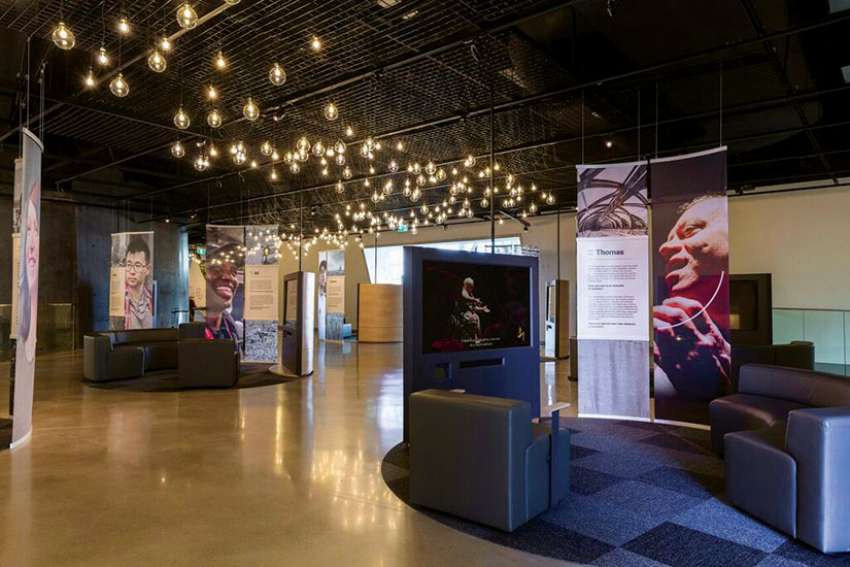Our Canada, My Story opened March 1 and shares some current perspectives and past human rights experiences as Canada marks 150 years of Confederation in 2017. The acclaimed museum’s curators scoured the country to find multiple human rights topics related to equality and inclusion and through seven short films to share with visitors.
Topics covered are rights of persons with disabilities, people of diverse sexual orientations and gender identities, indigenous rights and reconciliation, freedom of expression, the right to health and food security, refugee rights and the impacts of historical rights violations.
“We let people express themselves in the way they wanted to and express their daily lives and experiences and the obstacles they faced in their own way,” said Julia Peristerakis, a researcher/curator at the Winnipeg-based museum.
“We’re showing a few stories and (while) they may be different than anything I’ve experienced, they’re our stories, they’re Canada’s stories.”
“Canada is full of ordinary people who do extraordinary things to make this country and our world a better place,” said John Young, president and CEO of the Canadian Museum for Human Rights. “As role models, they can help build education and awareness about how we can all work to promote human rights.”
Our Canada, My Story takes over the Expressions gallery on the museum’s sixth floor for its run into the fall.
The idea behind the exhibit, Peristerakis said, is to ask Canadians if these are things they’ve experienced, can they imagine what it would be like to contend with this and how they feel people overcome their obstacles.
“This is our country and these successes or these setbacks are our setbacks to our human rights story,” she said.
When crossing the country to find these stories, whether it be the plight of a single mother living in the north or the Somalian refugee who is now a firefighter and basketball coach in Halifax, Peristerakis said they really didn’t come up with the stories they were expecting to find.
“Although these stories are unique and maybe the specific obstacles to the full enjoyment of their human rights are unique, there’s so many more similarities in these stories, which at the end of the day is that everyone wants to feel and be treated equally,” she said. “It’s important to understand these unique struggles and how people get there when they do face challenges or obstacles to those human rights, but that these are all things that we should have and should be realized in Canada, and that we are striving for.”
The exhibit also aims to inspire, with stories about overcoming obstacles in “really different and uplifting ways,” said Peristerakis.
One of the stories is about Thomas Poulsen of Calgary, who died just weeks before the exhibit opened. (Poulsen’s family gave the museum permission to keep his story as part of Our Canada, My Story.) Afflicted with cerebral palsy, Poulsen didn’t let that keep him from being a dancer in a mixed ability dance group.
“He really articulates his experiences and that feeling of inclusion that comes from being able to be a part and be fully included in this way of expressing himself through dance,” said Peristerakis.
He was also part of an activist group, Disability Action Hall, that works on accessibility and inclusion issues, and Poulsen “articulates the way he wants to be treated, recognized and appreciated as someone with a disability,” said Peristerakis.
Our Canada, My Story also has an interactive component, where visitors can take a photo of themselves and share their own journey. Some of these will be presented when the exhibit wraps up.
Our Canada, My Story is one of four exhibits at the museum to celebrate Canada’s 150th birthday, including Points of View, a national photography exhibition opening Canada Day.
For information on the exhibits, see humanrights.ca.
(Conlon is a writer in Regina.)


